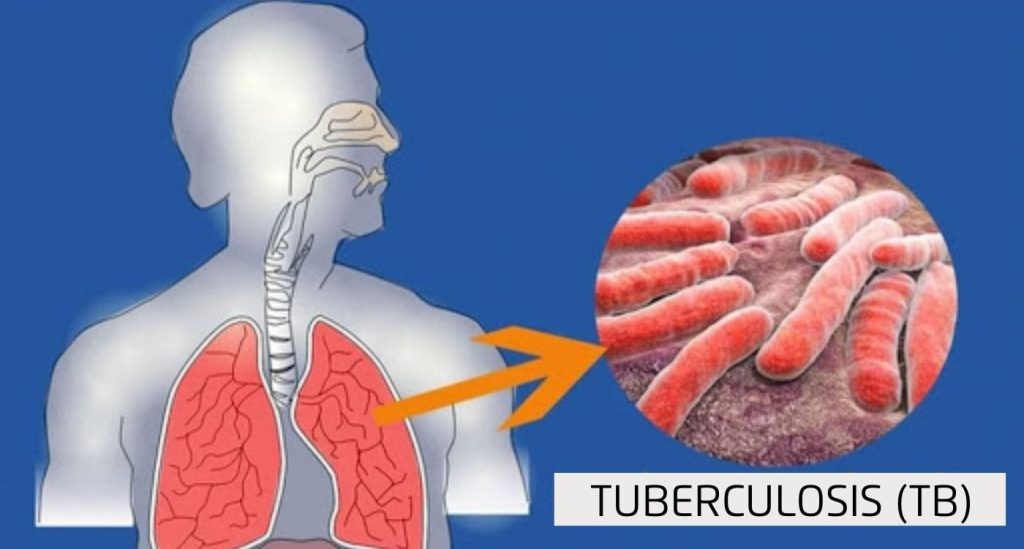Context:
The Union Ministry of Health and Family Welfare, announced several key initiatives to enhance nutrition support for TB patients and their household contacts.
More on the News
- Nutrition support under Ni-Kshay Poshan Yojana (NPY) has been increased from the existing ₹500 per month/patient to ₹1,000/month/patient for the entire duration of the treatment.
- Thus, all TB patients will now receive nutritional support of ₹ 3,000 to ₹ 6,000 under Ni-Kshay Poshan Yojana (NPY).

Energy-dense nutrition supplement (EDNS) is also introduced for all patients with BMI<18.5, covering approximately 12 lakh underweight patients.
- EDNS would be provided to all eligible patients for the first two months of their treatment.
- The cost will be shared between the Centre and States on a 60:40 basis.
The government has also expanded the scope & coverage of the Ni-Kshay Mitra initiative under Pradhan Mantri TB Mukt Bharat Abhiyaan (PMTBMBA) to the family members (household contacts) of TB patients.
- PMTBMBA was launched in September 2022 to provide community support to TB patients. It aims to bring together people from all backgrounds into a ‘Jan Andolan’ and escalate the progress toward TB elimination.
Tuberculosis
- TB is an infectious disease caused by bacteria (Mycobacterium tuberculosis) which is spread when people who are sick with TB expel bacteria into the air.
- TB is spread through the air when people with lung TB cough, sneeze or spit.
- TB is the leading cause of death of people with HIV and also a major contributor to antimicrobial resistance (AMR).
- According to the Global TB Report 2023, around 87% of new TB cases occurred in the 30 high TB burden countries, while more than two-thirds of the global total was in eight countries: India (27%), Indonesia (10%), China (7.1%), the Philippines (7.0%), Pakistan (5.7%), Nigeria (4.5%), Bangladesh (3.6%) and the Democratic Republic of the Congo (3.0%).
- The number of reported TB cases increased from 24.2 lakh in 2022 to 25.5 lakh cases in 2023.
- TB is a curable disease. It is treated by a standard 6-month course of 4 antibiotics. Common drugs include rifampicin and isoniazid.
There are several types of drug-resistant TB disease.
- Mono-resistant TB disease is caused by TB bacteria that are resistant to one TB treatment drug.
- Poly-resistant TB disease is caused by TB bacteria that are resistant to at least two TB drugs (but not both isoniazid and rifampin).
- Multidrug-resistant TB (MDR TB) disease is caused by TB bacteria that are resistant to at least isoniazid and rifampin, the most effective first-line TB treatment drugs.
- Extensively drug-resistant TB (XDR TB) is a rare type of MDR TB caused by TB bacteria that are resistant to:
- Isoniazid and rifampin, a fluoroquinolone, and a second-line injectable (amikacin, capreomycin, and kanamycin).
India’s initiative to eliminate TB
- National Strategic Plan (NSP) for Tuberculosis Elimination (2017-2025): is a framework that outlines the government’s plan to eliminate tuberculosis (TB) in India by 2025.
- TB-Mukt Panchayat initiative: is a collaboration between multiple sectors launched by the Government of India to end tuberculosis (TB) by 2025.
- DOTS (Directly Observed Treatment Short-course): is a cost-effective strategy that is the international standard for TB elimination programs. India has adapted and tested DOTS since 1993 under the National Tuberculosis Elimination Programme (NTEP).

